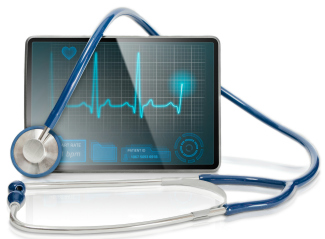
How Digital Technology is Transforming Healthcare
Our healthcare systems are undergoing sweeping digital transformations that many of us could not have even imagined as recently as 10 years ago. Meaningful Use initiatives with incentives funded by the HiTech Act have driven an increase in electronic health records (EHRs) in acute care hospitals, as well as outpatient settings. In addition, the number of hospitals with EHRs has quadrupled from 2010 to 2013, and physician adoption of the EHR has doubled from 2009 to 2013. As a result of this boom in information technology, consumers have not only become more involved in monitoring their own health but are well-positioned to directly engage with those who provide their healthcare (HHS.gov, 2014).
Devices available to consumers include activity trackers, smart scales, multi-measure wellness tools, and diet/weight loss/nutrition tools, to name a few (HealthIT.gov, 2015). We are in the midst of an explosion in healthcare information technology, and the possibilities seem endless for healthcare professionals and consumers alike. The question then becomes: How will this massive increase in digital technology affect patient outcomes?
In research funded by the National Institute of Nursing Research (NINR), Dr. Marilyn Rantz from the University of Missouri has created a system that monitors older adults for signs of possible illness in their own living quarters (NIH.gov, 2015). If any symptoms are detected, the individual’s healthcare provider is notified. The purpose of this work is to utilize technology to promote the independence of older adults, yet provide a safety net for early detection of the onset of illness. This cutting-edge technology has the potential to optimize the quality of life for older adults.
Additionally, digital technology has created a whole new realm of possibility for the consumer, specifically with the advent of smartphones and their applications (apps). According to Singh, Wilkinson, and Braganza, 84% of their subjects owned smartphones; the survey studied teenagers and caregivers that were largely underserved in urban New York (2014). Smartphone apps are now considered helpful tools in enhancing patient education, facilitating communication, and patient engagement. However, the study states that smartphone apps are not a panacea, citing potential issues including limited resources for data plans, reliability, and ease of use. The researchers pointed to a need for further investigation about how apps should be developed and how to narrow the focus in order to reach the intended audience.
Because the field of information technology is relatively new and growing at a rapid pace, we’ve just explored the tip of the iceberg. There are still worlds of possibilities yet to be explored. Ultimately, we should all be asking ourselves, “How will we be transformed by healthcare information technology?”
To learn more, check out the RN.com CE course, “Nursing Informatics.”
References:
HealthIT.gov. (2015). Information Technology in Health Care: The Next Consumer Revolution. HealthIT.gov. (2015). Stay Well. Access Wellness Resources.
HHS.gov. (2014). More physicians and hospitals are using EHRs than before. [Press release].
NIH.gov. (2015). Because of Nursing Research: Supporting Technologies for Healthy Independent Living.
Singh, A., Wilkinson, S., & Braganza, S. (2014). Smartphones and pediatric apps to mobilize the medical home. J Pediatr, 165(3), 606-610. doi: 10.1016/j.jpeds.2014.05.037




